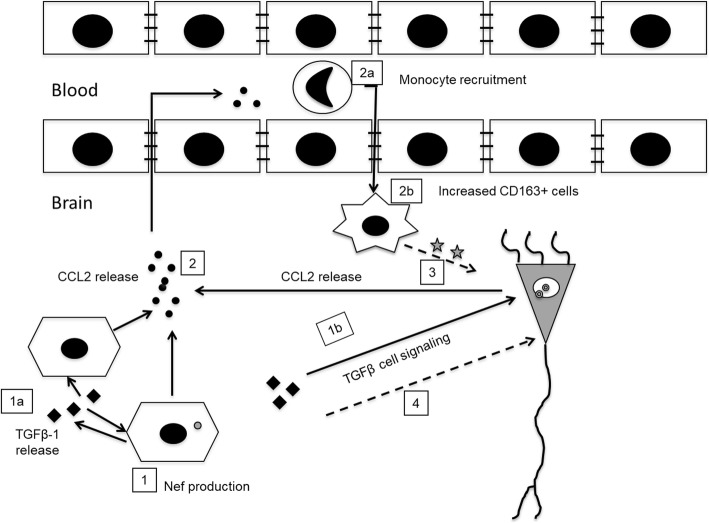Fig. 10.
Proposed model of the involvement of HIV-1 Nef and TGFβ-1 in neuroinflammation and learning impairment. Astrocytes expressing Nef (1) release TGFβ-1 acting in paracrine and autocrine fashion (1a) to stimulate the TGFβR of astrocytes and adjacent neurons (1b). This activates SMAD signaling and induces CCL2 (2), a potent chemoattractant that results in mononuclear cell infiltration (2a) and subsequent differentiation into macrophages expressing the scavenger receptor CD163 (2b). The consequent inflammation results in astrogliosis and damage to hippocampal neurons (3) as an underlying cause of the spatial learning impairment. TGFβ-1 also can drive direct neurotoxicity by increased glutamatergic activity and intracellular calcium (4). Solid lines indicate supported by data in this study and in the literature. Dashed lines are conclusions drawn from previous studies and work of others

